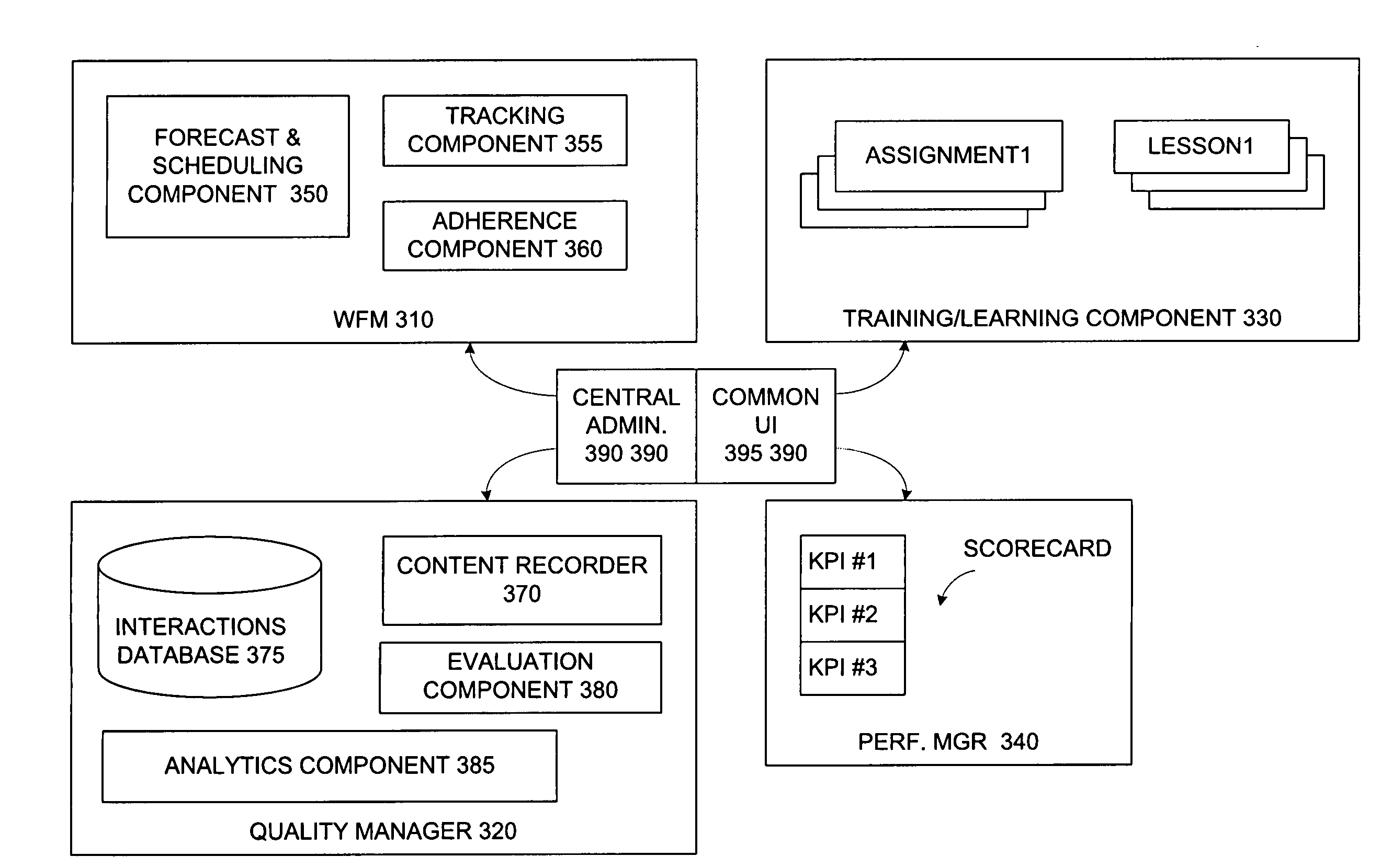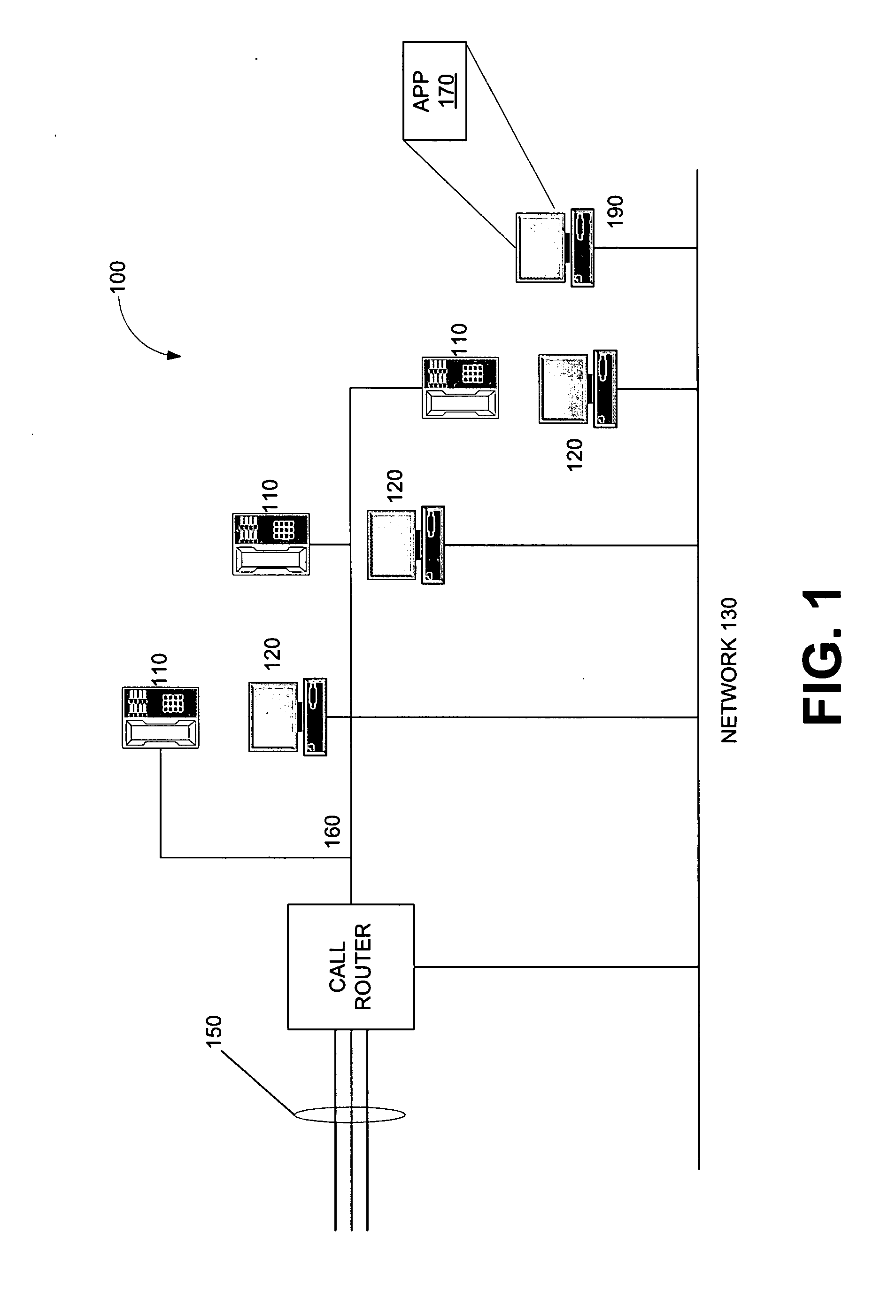Systems and methods for workforce optimization and integration
a technology of workforce optimization and integration, applied in the direction of instruments, supervisory/monitoring/testing arrangements, electrical equipment, etc., can solve the problem that the exchange of data between the systems requires additional work by someone at the contact center
- Summary
- Abstract
- Description
- Claims
- Application Information
AI Technical Summary
Benefits of technology
Problems solved by technology
Method used
Image
Examples
first embodiment
[0046]FIG. 2 is a diagram of one embodiment of the integrated integrated process for optimizing operations at a contact center (200), in which several interfaced organizations are combined as a single integrated operational process and / or platform. In the first stage (210), the business goals of the contact center are defined. Goals are defined in terms of metrics that describe how the contact center is expected to perform. Some metrics relate to expected revenue, such as revenue / hour or revenue / agent. Other metrics relate to service level, such as time-to-answer and rate of first-call resolution. Persons familiar with contact center operations will understand these and many other business goals and metrics.
[0047]The first stage (210) may also include campaign planning. Profiles for campaigns are defined, for example by: inbound or outbound; how many contacts are expected; date and duration of the campaign; and what sorts of agent skills are needed.
[0048]Information about the goals ...
second embodiment
[0053]FIG. 3 is a high-level view of components in one embodiment of an integrated contact center system 300. The integrated system 300 includes two or more of the following components: a work force manager (WFM) 310; a quality monitoring component 320; a learning component 330; and a performance management component 340. These components (310-340) cooperate to implement the integrated contact center business process (200) as described earlier.
[0054]As will be described, combining agent quality metrics from the quality monitor 320 (e.g., synchronous such as voice, asynchronous such as e-mail or chat) with WFM 320 (e.g., agent planning, scheduling) may provide insight that contact center supervisors can use to confirm the value provided by agents to the business as a whole.
[0055]The WFM 310 performs many functions related to the agent workforce. For example, WFM 310 can: schedule single, multiple, or virtual contact centers across multiple time zones; accommodate a dedicated, blended...
third embodiment
[0067]FIG. 4 shows a point of integration between two components of the integrated contact center system 300, the WFM 310 and the quality monitor 320. Conventional call center systems provide an “interactions” application that allows playback of recorded interactions and live monitoring of interactions. Importantly, these conventional systems did not integrate interactions with WFM adherence information. The integration between the WFM 310 and the quality monitor 320 described in FIG. 4 allows a supervisor to “drill down” and examine a particular recorded interaction from a display of agent activity and / or adherence information.
[0068]In this disclosure, the term “interaction” refers to a record of the content of agent activities related to a call. Note that agent activities are not limited to audio of the call itself. Other forms of media are included. Examples of other types of interactions are: video recording of the agent; application activity on the agent's workstation 120; web ...
PUM
 Login to View More
Login to View More Abstract
Description
Claims
Application Information
 Login to View More
Login to View More - R&D
- Intellectual Property
- Life Sciences
- Materials
- Tech Scout
- Unparalleled Data Quality
- Higher Quality Content
- 60% Fewer Hallucinations
Browse by: Latest US Patents, China's latest patents, Technical Efficacy Thesaurus, Application Domain, Technology Topic, Popular Technical Reports.
© 2025 PatSnap. All rights reserved.Legal|Privacy policy|Modern Slavery Act Transparency Statement|Sitemap|About US| Contact US: help@patsnap.com



